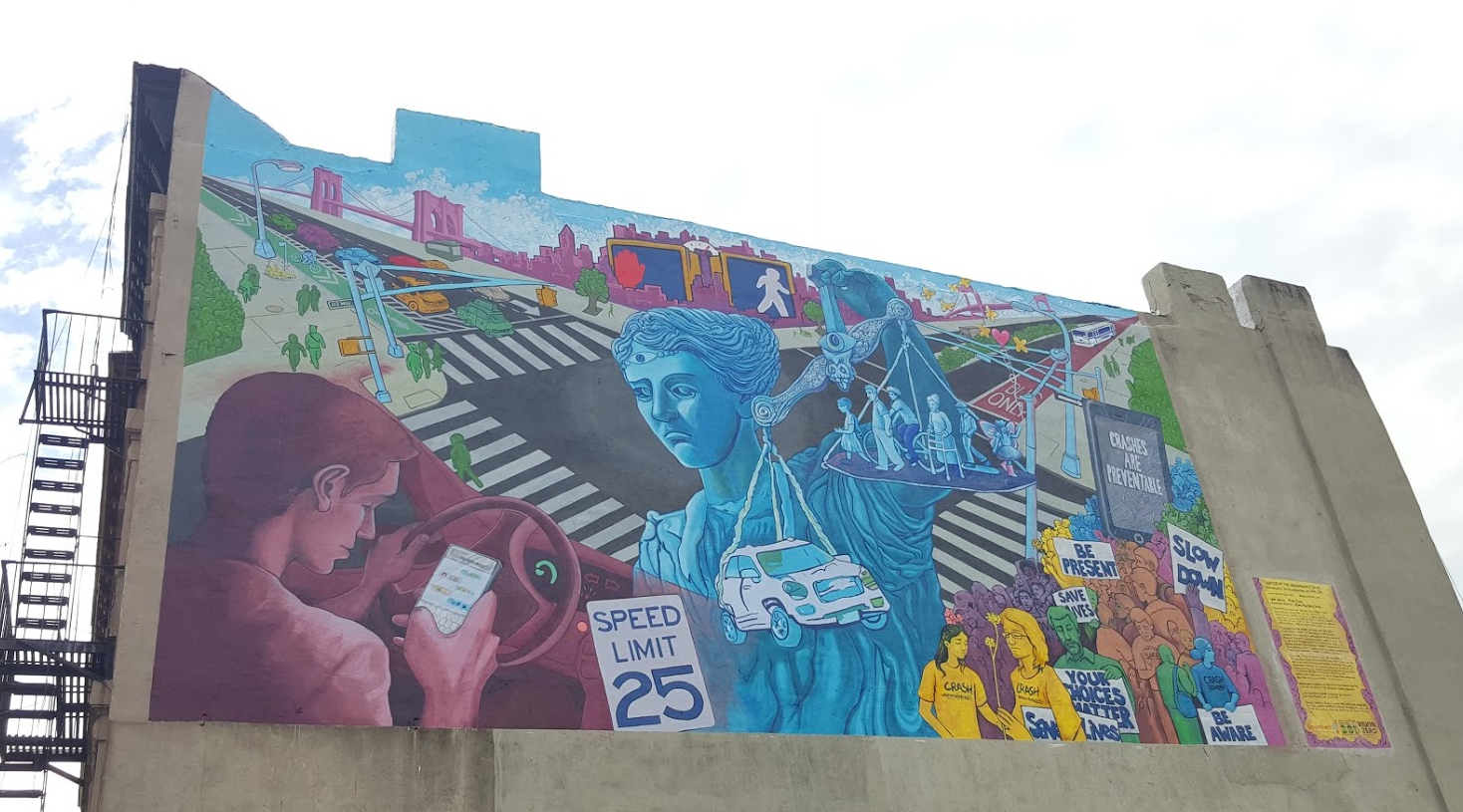‘Vision Zero’ Is Not a Slogan, and Other Takeaways WalkDenver Got From NYC

When Mayor Michael Hancock committed to ending traffic deaths and serious injuries under the banner of Vision Zero, he launched an “action plan” to start the process and called on advocates to help.
WalkDenver Policy Director Jill Locantore is one of those advocates. She’s also part of the budding Denver Vision Zero Coalition. Locantore went to the Vision Zero Cities Conference in New York last week and shared some of her takeaways.
Vision Zero Is Not a Slogan
One thing that really became clear to me is that a big challenge for working on Vision Zero here in the U.S. is to defend the integrity of the movement. Because it really is a shift in philosophy in how we have approached traffic safety in the past.
The shift is really from placing all of the responsibility on individuals and their behavior and personal choices — don’t text and drive, wear your seat belt, go the speed limit — to looking more at the system, and how we can design a traffic system that accommodates people who inevitably will make mistakes.
Speed Kills People, Good Street Design Saves People
We should be using data to know what interventions are most effective where. We know that speed kills — that if a car is going 40 miles per hour and strikes a pedestrian, it’s likely that pedestrian will die. If they’re going 20 miles per hour, it’s likely that pedestrian will survive.
And we know that automated enforcement has been very effective in reducing speeding. In New York City, they’ve been implementing automated speed cameras in school zones, and they’ve seen a decline in fatalities.
We also know from Europe’s experience that even more than the posted speed limit or the enforcement, it’s the design of the road. If it’s a wide, straight roadway, people are going to drive fast regardless of what the posted speed is. If it’s a narrow roadway that has curves, people will drive slower.
Goals Mean Nothing Without Timelines
In other cities transparency and accountability have been really important. Setting goals and timelines — not just zero fatalities, but how quickly are we gonna get there? What are our interim goals? In what time frame? What are the specific performance metrics that the city is going to use to measure that progress? Sharing the data so that we can all be monitoring how the city is doing is part of that.
Then it’s about backing up those goals with action. There are some great examples in Seattle and San Francisco where they recently passed bond initiatives where the overriding theme was safety and we re-engineering our streets to be safe for all users.
Locantore shared a quote from Janette Sadik-Khan, the former New York DOT chief and an influential voice in the movement to end traffic deaths: “We get the safety we build for,” she said. Denver’s streets move cars fast because they were built to do just that. That’s why so many more people get killed on Denver’s streets, per capita, than in other American cities. Fortunately streets can be redesigned to achieve safer vehicles speeds.
It’s probably tempting for some politicians to mouth a phrase like “Vision Zero” for their constituents and feel like they’ve done something. Truth is, good intentions are just the beginning.


